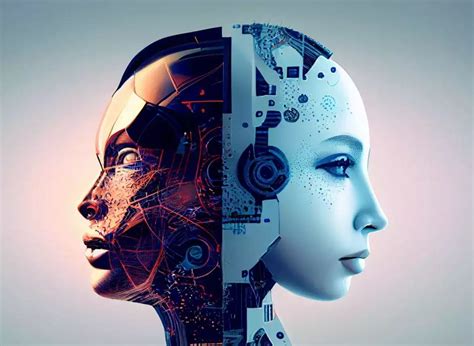
Michael Jordan’s recent viral video showing him watching a street performer in Portugal has sparked debate, not because of his enjoyment of the music, but due to his apparent reluctance to pose for a photo with the artist, allegedly driven by concerns over artificial intelligence and potential misuse of his image.
Michael Jordan’s Portugal Visit Sparks AI Concerns Regarding Image Use
A viral video circulating online shows basketball legend Michael Jordan enjoying a street performance during a recent visit to Portugal, but it’s not his appreciation for the music that has captured headlines. Instead, attention has focused on Jordan’s seeming refusal to take a photo with the performer, with reports suggesting his reluctance stems from increasing worries about artificial intelligence and the unauthorized exploitation of his likeness. The incident highlights a growing concern among celebrities and public figures regarding the potential for AI-generated content to be used for malicious or misleading purposes.
The video, initially shared across social media platforms, shows Jordan standing near the performer, seemingly engrossed in the music. While he acknowledges the musician and appears to enjoy the performance, he seemingly declines the request for a photograph. This immediately triggered a wave of speculation and commentary, with many interpreting his actions as dismissive or aloof. However, subsequent reports, citing sources close to Jordan, indicate that his refusal was motivated by a desire to protect his image from potential misuse in the age of sophisticated AI technology.
“It wasn’t about the performer,” an anonymous source reportedly told various media outlets. “Michael is increasingly concerned about how AI can replicate his image and voice. He’s very protective of his brand.” This explanation has resonated with many, given the rising prevalence of deepfakes and other AI-generated content that can convincingly mimic real people. Celebrities, in particular, are vulnerable to having their likenesses used without consent for advertising, political endorsements, or even defamatory content.
The incident throws light on the complexities and challenges faced by celebrities and public figures in navigating the evolving landscape of AI. While AI offers numerous potential benefits, it also presents significant risks, particularly in the realm of image and identity protection. Jordan’s reported concerns reflect a broader anxiety within the entertainment industry about the potential for AI to erode control over one’s own image and brand.
Deepfakes and the Threat to Image Rights
The technology behind deepfakes has advanced rapidly in recent years, making it increasingly difficult to distinguish between real and fabricated content. Deepfakes can be used to create realistic-looking videos and audio recordings of individuals saying or doing things they never actually did. This has serious implications for reputation management, as a convincing deepfake can damage a person’s credibility and lead to significant financial and professional harm.
Moreover, the unauthorized use of a celebrity’s image in AI-generated advertising can mislead consumers and dilute the brand’s value. If a company uses a deepfake of Michael Jordan endorsing a product he doesn’t actually support, it not only violates his rights but also deceives the public. This can lead to lawsuits and damage to the celebrity’s reputation.
The legal framework for addressing deepfakes and AI-generated content is still evolving. While existing laws relating to defamation, copyright, and right of publicity may offer some protection, they are not always adequate to address the unique challenges posed by AI. Many jurisdictions are considering new legislation to specifically regulate deepfakes and other forms of AI-generated content that infringe on individual rights.
The Broader Implications for Celebrities and Public Figures
Michael Jordan is not alone in his concerns about AI. Many other celebrities and public figures have expressed similar anxieties about the potential for their images and voices to be misused. The Screen Actors Guild-American Federation of Television and Radio Artists (SAG-AFTRA), a union representing actors and performers, has been actively advocating for stronger legal protections against the unauthorized use of AI in entertainment.
In addition to deepfakes, celebrities are also concerned about the use of AI to create virtual avatars that can be used in video games, virtual reality experiences, and other digital environments. While some celebrities may choose to license their likeness for these purposes, others may object to having their image used without their consent.
The rise of AI also raises questions about the future of work in the entertainment industry. As AI technology becomes more sophisticated, it may be possible to create realistic-looking actors and performers who can replace human talent. This could have a significant impact on the livelihoods of many actors, musicians, and other creative professionals.
Potential Solutions and Strategies
Addressing the challenges posed by AI requires a multi-faceted approach involving legal reforms, technological solutions, and industry self-regulation. Some potential solutions include:
- Stronger legal protections: Legislatures need to enact laws that specifically address deepfakes and other forms of AI-generated content that infringe on individual rights. These laws should provide for both civil and criminal penalties for those who create or distribute malicious AI-generated content.
- Technological solutions: Researchers are developing technologies that can detect and identify deepfakes. These technologies can be used to flag potentially fraudulent content and prevent it from being widely disseminated.
- Industry self-regulation: Entertainment companies and social media platforms need to develop their own policies and procedures for addressing AI-generated content. This could include requiring users to disclose when they are using AI to create content and implementing measures to prevent the spread of deepfakes.
- Education and awareness: It is important to educate the public about the potential risks of AI and how to identify deepfakes. This can help to prevent the spread of misinformation and protect individuals from being harmed by AI-generated content.
- Watermarking and authentication: Using digital watermarks and authentication technologies can help verify the authenticity of images and videos and prevent them from being altered or misused.
- Contractual agreements: Celebrities and public figures can negotiate contractual agreements that restrict the use of their image and voice in AI-generated content.
The Ongoing Debate and Future Implications
The incident involving Michael Jordan in Portugal has reignited the debate about the ethical and legal implications of AI. As AI technology continues to evolve, it is crucial to have a robust framework in place to protect individual rights and prevent the misuse of AI.
The challenges posed by AI are not limited to celebrities and public figures. All individuals are potentially vulnerable to having their images and voices used without their consent in AI-generated content. It is therefore essential to raise awareness about these risks and to develop effective strategies for mitigating them.
The legal and ethical landscape surrounding AI is constantly evolving. As new technologies emerge, it will be necessary to adapt existing laws and regulations to address the unique challenges they present. This will require collaboration between policymakers, technologists, and legal experts.
The incident with Jordan serves as a crucial reminder of the accelerating need for a comprehensive approach to regulating AI and safeguarding personal image rights in the digital age. As technology advances, the line between reality and fabrication blurs, making it imperative to establish clear guidelines and protections to prevent misuse and manipulation.
The Performer’s Perspective
While the focus has largely been on Jordan’s perspective and potential AI concerns, the street performer’s side of the story also offers valuable insight. Although the musician has remained relatively quiet about the incident, sources indicate a degree of disappointment at not being able to capture a photo with the basketball icon. Street performers often rely on such interactions and subsequent social media sharing to broaden their reach and attract new audiences.
For emerging artists, a photo with a celebrity like Michael Jordan can serve as a significant boost to their visibility and credibility. It can lead to increased bookings, collaborations, and overall career advancement. The denial of such an opportunity, regardless of the reason, can be disheartening, particularly when the performer is simply trying to earn a living through their art.
However, most performers understand the complexities involved and are generally respectful of celebrities’ boundaries and concerns. In this instance, while there may have been initial disappointment, there appears to be a general understanding of the broader context and the potential issues surrounding image rights and AI.
The Role of Social Media
Social media played a crucial role in amplifying the incident involving Michael Jordan. The video quickly went viral, generating widespread discussion and debate. Social media platforms have become powerful tools for disseminating information and shaping public opinion, but they also present challenges in terms of misinformation and the spread of deepfakes.
Social media companies have a responsibility to address the issue of AI-generated content on their platforms. This could include implementing measures to detect and remove deepfakes, providing users with tools to report potentially fraudulent content, and educating the public about the risks of AI.
However, social media companies also face challenges in balancing the need to protect users from harmful content with the need to uphold freedom of speech. Striking the right balance will require careful consideration and collaboration with policymakers and other stakeholders.
Conclusion
Michael Jordan’s encounter with the street performer in Portugal serves as a microcosm of the larger challenges posed by AI in the digital age. It highlights the need for stronger legal protections, technological solutions, and industry self-regulation to protect individual rights and prevent the misuse of AI. As AI technology continues to evolve, it is crucial to have a comprehensive and adaptable framework in place to address the ethical and legal implications. The incident underscores the evolving dynamics between celebrities, their images, and the increasing influence of artificial intelligence in shaping public perception and interaction. The concerns raised by Jordan’s reluctance reflect a growing unease among public figures regarding the potential for AI to exploit their likeness and erode control over their personal brand. This incident serves as a catalyst for continued discussions on the ethical and legal considerations surrounding AI and its impact on image rights, privacy, and the entertainment industry.
Frequently Asked Questions (FAQs)
1. Why did Michael Jordan reportedly refuse to take a photo with the street performer in Portugal?
Reports suggest Michael Jordan declined the photo opportunity due to concerns about artificial intelligence and the potential misuse of his image. He is reportedly worried about deepfakes and other AI-generated content that could mimic his likeness without his consent.
2. What are deepfakes and why are they a concern for celebrities?
Deepfakes are AI-generated videos or audio recordings that can convincingly mimic real people saying or doing things they never actually did. Celebrities are concerned because deepfakes can be used to damage their reputation, endorse products they don’t support, or spread misinformation using their image.
3. What is being done to protect celebrities from the misuse of AI-generated content?
Efforts to protect celebrities include enacting stronger legal protections against deepfakes, developing technologies to detect and identify fraudulent content, promoting industry self-regulation, and raising public awareness about the risks of AI. Celebrities can also negotiate contractual agreements that restrict the use of their image and voice in AI-generated content.
4. How are social media platforms addressing the issue of AI-generated content?
Social media platforms are implementing measures to detect and remove deepfakes, providing users with tools to report potentially fraudulent content, and educating the public about the risks of AI. However, they also face challenges in balancing the need to protect users from harmful content with the need to uphold freedom of speech.
5. What can individuals do to protect themselves from the misuse of AI-generated content?
Individuals can protect themselves by being aware of the risks of AI, being skeptical of online content, verifying information from multiple sources, and reporting potentially fraudulent content to social media platforms. They can also support efforts to enact stronger legal protections against deepfakes and other forms of AI-generated content.









